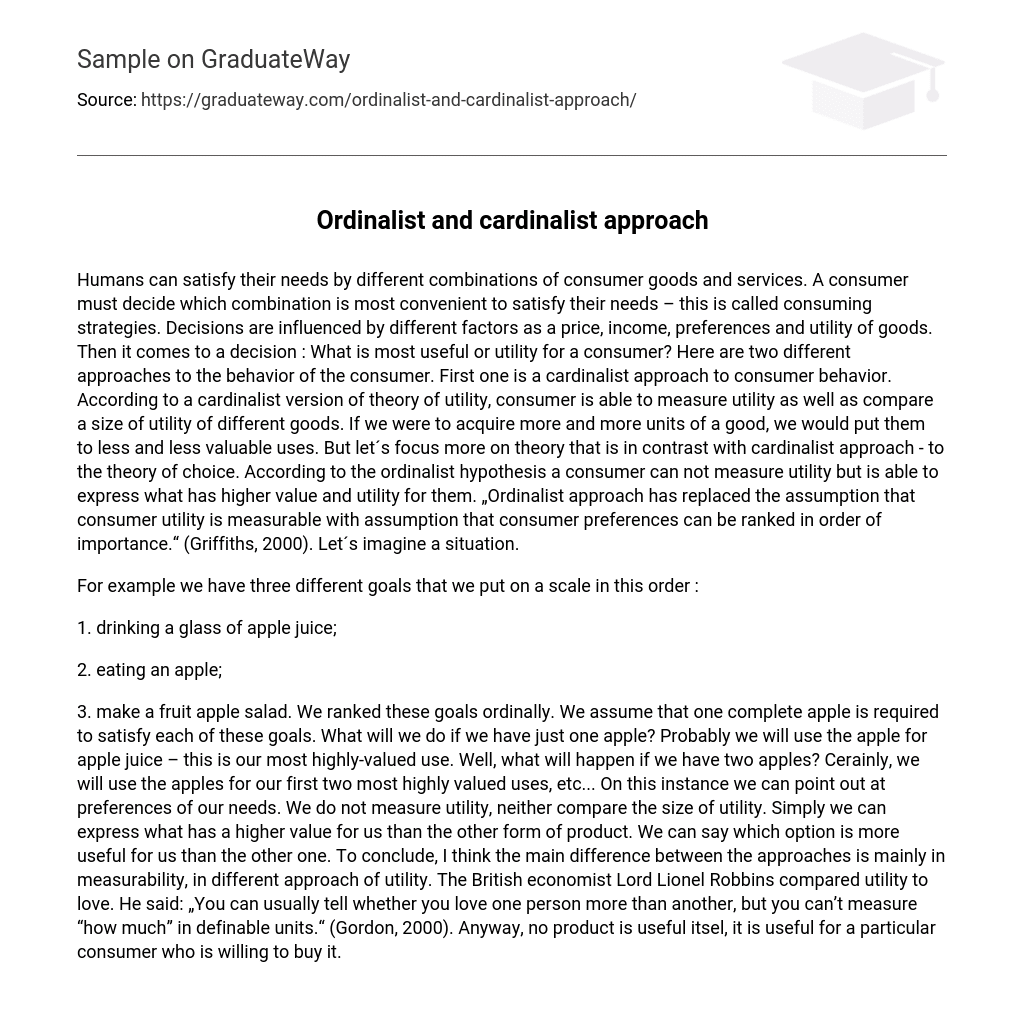Humans have the ability to meet their needs by consuming different combinations of goods and services. When deciding what to consume, consumers must consider factors like price, income, preferences, and the utility of goods. Determining what is most beneficial for consumers is a crucial question. There are two approaches to understanding consumer behavior: the cardinalist approach and the theory of choice. The cardinalist approach suggests that consumers can measure and compare the utility of different goods; as the quantity of a good increases, its utility decreases. However, there is an alternative perspective called the theory of choice that contradicts this idea. According to this ordinalist hypothesis, consumers cannot measure utility but can indicate which goods hold greater value and usefulness for them. Instead of quantifying utility, this theory focuses on ranking consumer preferences in terms of importance. The ordinalist approach has replaced the notion that utility can be measured. Now let’s examine a hypothetical scenario.
We arrange three distinct goals in a specific order: for instance, following this scale:
1. Consuming a glass of apple juice.
2. consuming an apple;
3. Our objective is to create a fruit apple salad, which we have prioritized based on importance. Each goal necessitates the use of one complete apple. In the event that we only possess one apple, it will likely be utilized to produce apple juice, our most valued utilization. If we possess two apples, they will be allocated for our top two most valued uses and so forth. This approach enables us to express our preferences and determine which option holds more utility for us. The primary distinction between these approaches lies in measurability and the concept of utility. Utility cannot be quantitatively measured or compared; it resembles love as British economist Lord Lionel Robbins once stated: “You can usually tell whether you love one person more than another, but you can’t measure ‘how much’ in definable units” (Gordon, 2000). Ultimately, a product’s usefulness is contingent upon a specific consumer who is willing to make a purchase.





